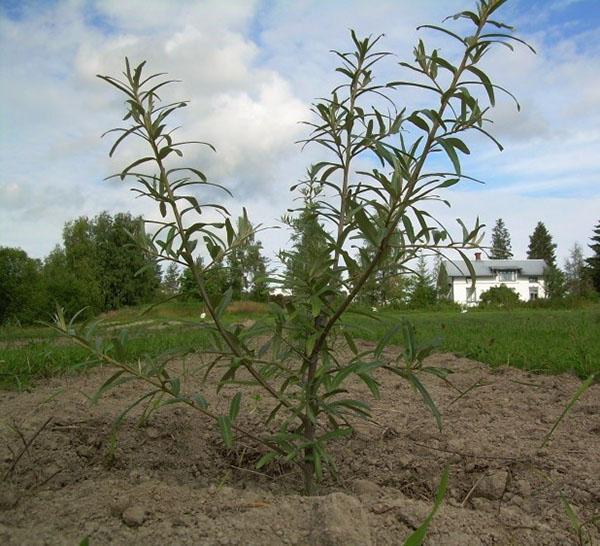Proper care of sea buckthorn will bring a bountiful harvest
 Recently, sea buckthorn has been in great demand among gardeners. The bred varieties have become more compact and stunted. Now it has become easier and more interesting to collect a rich harvest from an unpretentious plant. Still, dried branches and shriveled berries spoil the unique autumn landscape and mood of the gardener. How to deal with this?
Recently, sea buckthorn has been in great demand among gardeners. The bred varieties have become more compact and stunted. Now it has become easier and more interesting to collect a rich harvest from an unpretentious plant. Still, dried branches and shriveled berries spoil the unique autumn landscape and mood of the gardener. How to deal with this?
In order for the culture to bear fruit, one male is planted near the female bush. The buds of this species resemble pine cones, because they are several times larger than ordinary female ones.
Loose or not
Weeds do not give life to either the owners or the crops. Many begin to remove them intensively. Since the root system of sea buckthorn is superficial, it should not be disturbed. It is worth a little damage to the roots, as they will begin to release new shoots. In this case, the plant begins to direct all its energy to the wounds formed. Gradually, the juice leaves the branches, and they dry out.
The best way to control weeds is mulching... The layer of dried and rotted leaves / grass can be from 10 cm. Such a shelter helps to maintain a humid microclimate in the underground part of the bush.
Standard menu
Most varieties differ in taste, shape and color of the berries. The sweeter the fruits, the earlier they ripen. Many decided to opt for varieties:
- Nizhny Novgorod sweet.
- Spicy.
- Yielding.
- Novinskaya.
Although sea buckthorn is considered a drought tolerant shrub, it is still recommended to water it. The roots are so close to the surface that they often do not reach the groundwater. A hot summer, especially without precipitation, is the first signal for water procedures. Among other things, according to the standard scheme, feed is added:
- in spring - nitrogen-containing fertilizers;
- in the second half of summer - phosphate and potash;
- the root area is mulched with humus.
If the plant is planted in light types of soil, then it should not be watered too often and abundantly. This also applies to dry periods.
It is important to take into account the planting season. For container seedlings, the spring months are preferred. It is worth starting from the weather of the region. The farther south, the earlier the disembarkation takes place. If you buy bushes with an open root system, then it is better to do this in the fall. In order for the delicate roots to adapt and grow, it is worth starting planting as early as possible.
Pruning and disease
Modern varieties allow you to form the crown of the bush. So, a gardener will have a rare opportunity to make a magnificent design masterpiece from a fruitful sea buckthorn. Cutting is advised:
- broken branches;
- basal, which grow too close to the ground and get in the way;
- amazed and wrong.
Many gardeners notice that as soon as the berries begin to ripen, they wither and dry out within 2-3 days. It turns out that this is not a disease, but an unusual pest - the sea buckthorn fly. The insect looks like a miniature white worm with a swollen belly. To remove it, it is worth treating the bush with a special preparation. The procedure is carried out from June 15 to the first days of July, when the fruits have not yet begun to ripen. As a result, you can save the crop and spare the insect.